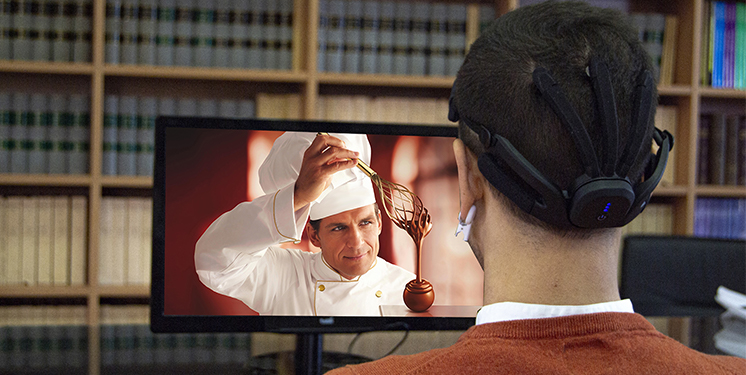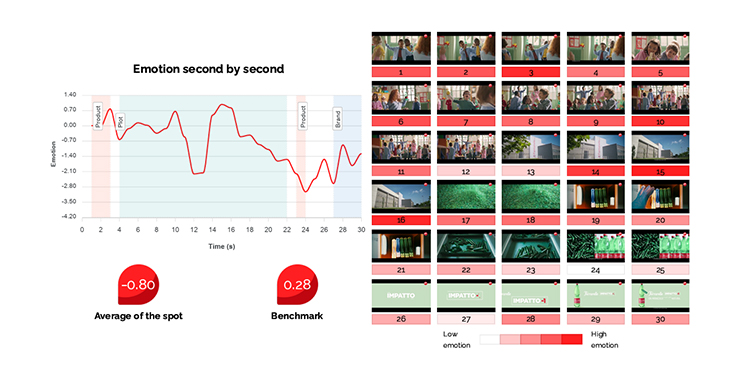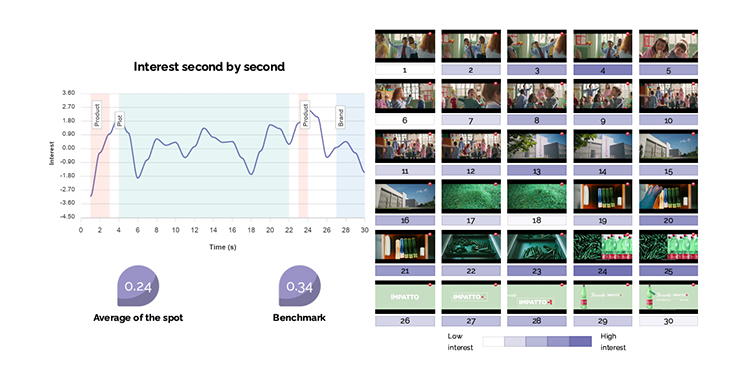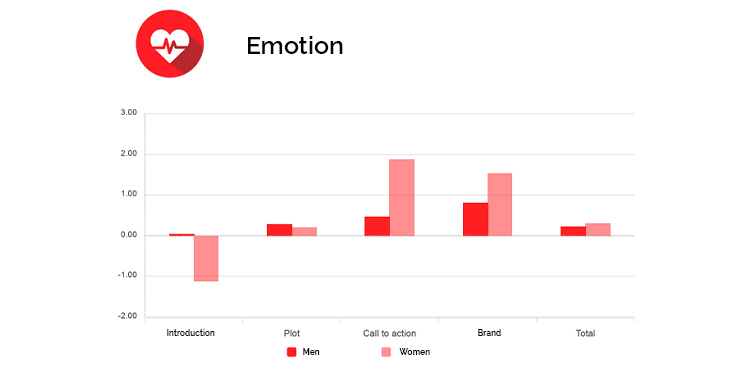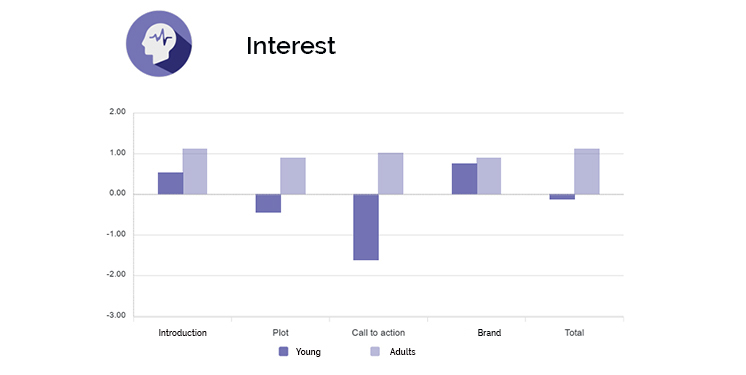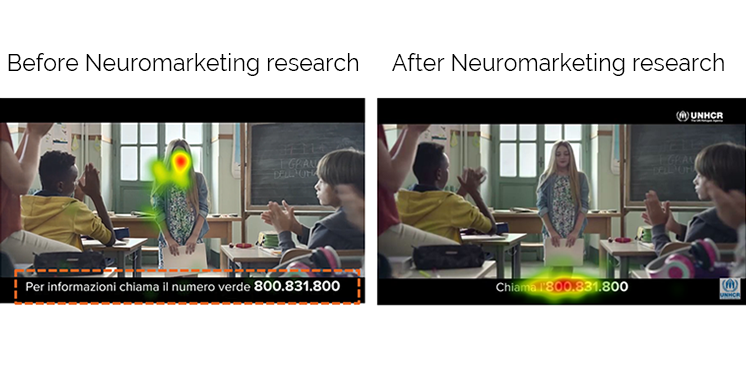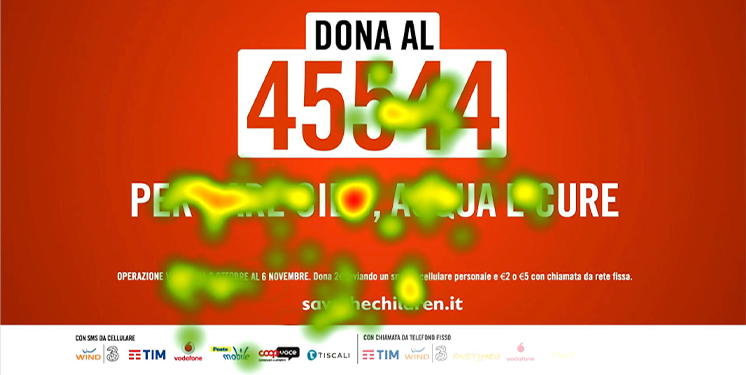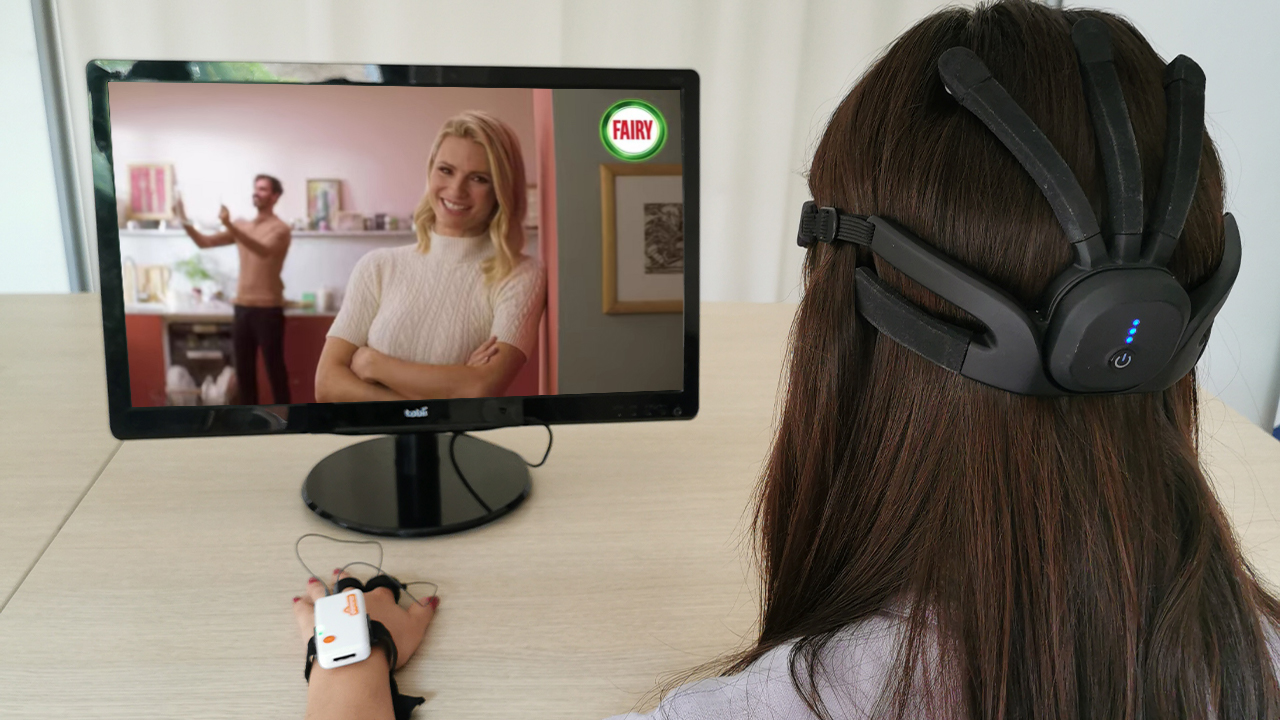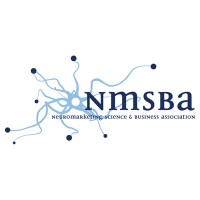Fast Navigation
What we do:
By testing the perception of advertising (ADV) stimuli with neuromarketing techniques, we can improve their effectiveness and provide original insights into consumer orientations.
BrainSigns' methods and expertise in this field make it possible to effectively verify the instinctive reaction to commercials or advertising images, characterizing it through indices of attention, cognitive effort, interest and emotion. These indices are computed using the most advanced methods in the international scientific literature and have been validated in numerous neuro-tests carried out for companies and agencies working in the field of advertising communication.
Measuring instinctive physiological responses is both innovative and effective, since advanced neuroscience has shown that brain processes play a key role in determining human instinctive behaviours. Incorporating these measures into the research process can really improve the effectiveness of ADV communication.
The main technologies used in this area are electroencephalography (EEG) to measure appreciation and cognitive effort, eye tracker (ET) for visual attention, photoplethysmography (PPG) and galvanic skin response (GSR) for emotional dimension, together with interviews to maintain the combination with traditional methods.
Very useful insights can be provided by analysing the instinctive perception of stimuli to increase the efficacy in terms of execution, impact and strength of the creative idea and composition of the message.
- An extensive database, of over 400 commercials already analysed, provides reference benchmarks in different market areas.
- Algorithms for signal processing developed in years of scientific research are applied to measure Interest, Emotion, Effort and visual Attention.
- A software platform built over the years, BrainExpresso, allows us to deliver the results very quickly and reduceding costs, sharing the test with other customers.
- Agile remote testing can also be used where appropriate (visual attention and facial coding only).
Results (What you can get):
In general, the analysis of implicit reactions improves the efficiency of an ADV communication and, in particular for the commercials, provides hints on how to correct/avoid mistakes. It can also provide insights that can be used in the overall marketing strategy.
In such a way it is possible to:
- Evaluate the effectiveness of an advertisement in terms of attention, emotion, interest and cognitive effort, for the entire communication and for segments of interest (e.g. product, claim, brand, testimonial).
- Identify possible corrections and improvements of a format.
- Choose the most engaging creativity.
- Avoid moments of confusion and inconsistent video and audio messages.
- Discover the distribution of the eye movements on images, and the different weighting of key areas of communication to maximize the readability of texts or to optimize a product positioning.
- Discover unexpected insights related to the target audience, such as the most engaging elements, that can be recalled in other touchpoints.
- Analyse which conceptual segments are more fluid (interesting with low cognitive effort) and which are less so.
- Analyse neuro-index peaks by identifying key frames for emotion or interest and lower performing frames in the coherence of the visual and copy.
- Analyse different sensitivities to the message by sub-groups: users and non-users, men and women, young people and adults, geographical areas.
- Fine-tune movie editing details by a rationale that also can be used for reducing the duration of an advertisement (from 30'' seconds to 20'' or 15'') by identifying the best or worst performing elements.
- Evaluate directly the sensorial impact of different musical solutions for a specific advertisement (TV, digital, radio commercial).


